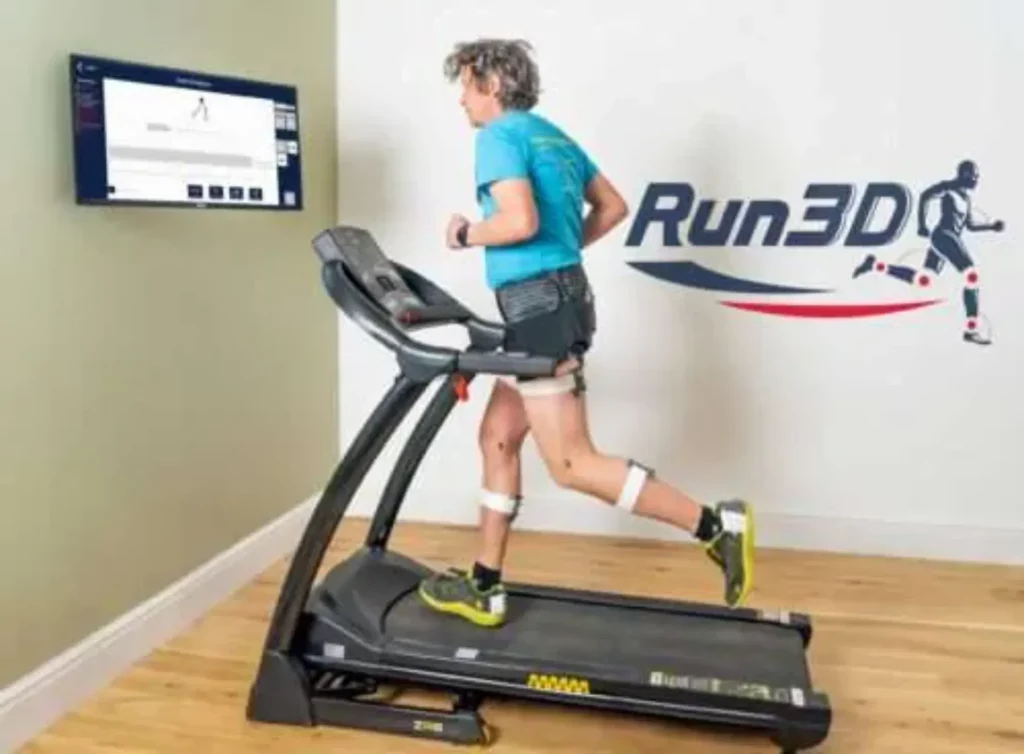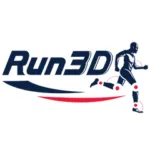What is a 3D Gait Analysis?
3D gait analysis is the examination of your foot and lower limbs and how they all function together. The foot is a complicated structure comprised of 28 bones, over 200 ligaments and 38 muscles, so its no surprise it might need a little bit of maintenance from time to time.
3D gait analysis uses specially designed cameras to measure the sensors that would be attached to your leg at the time of examination. We will use this information to create an accurate 3D model of your pelvis, hip, knee, ankle and foot and calculate precisely how well they are functioning with one another. In doing so, we use the same technology that is used in orthopaedic hospitals, research institutions and even some film studios!
By undertaking a 3D gait analysis, you are allowing your podiatrist to accurately assess your lower limbs and look for any abnormalities or asymmetries in your walking or running gait. Upon completing the examination, we will also complete a musculoskeletal examination of your flexibility, strength, neuromuscular control and alignment. Your podiatrist can then combine all of the information they have attained to gather an accurate profile of your biomechanical structure and functionality. With this information, your podiatrist can provide you with the best treatment or rehabilitation advice, depending on the problems you may be facing.
What makes 3D gait analysis important?
More traditional, video-based assessments typically only record in 2D, making it difficult to notice the more minor abnormalities in your gate that could be causing problems. It also makes it difficult to measure the rotational movements of the body.
The human body typically moves in 3 stages of motion, formed by complex sequences of movement and rotations. For example, if your knee bends, it will also rotate and begin to face your other leg. This is why it is essential to measure every movement pattern you have. Inaccurate measurements of your gait don’t allow us to accurately diagnose or treat issues you may have.
How can a 3D gait analysis help you?
As mentioned previously, a full 3D analysis of your gait and biomechanical function allows us to understand how your body operates and functions as one. By understanding this, we can see where any abnormalities or issues might be caused and, more specifically, target our treatment methods to cure these issues. Depending on the issues at hand, there are a couple of different treatment options available; some of these include:
- Orthotics
- Physiotherapy
- Daily exercise and stretching
- Footwear advice
- Gait retraining
There are a host of other positive impacts a 3D gait analysis can provide. For example, not only does it allow us to target and treat specific issues that might already be present, it allows us to prevent issues before they even occur. It can also improve your athletic performance by identifying and correcting biomechanical factors that could have hindered your performance. What’s not to like?
Who can benefit from 3D gait analysis?
Everyone can benefit from a 3D gait analysis, whether you’re an avid exerciser or just want to be able to walk to work more comfortably. You don’t have to suffer from a problem before considering gait analysis.
What happens at a 3D gait analysis appointment?
Step 1 – The set-up
As mentioned previously, your podiatrist will begin by attaching reflective markers to your legs and shoes. These are placed on specific anatomical locations so that the cameras can accurately measure your movement. This step usually takes about 5 – 10 minutes.
During a gait analysis, it would be beneficial if you wear shorts but if feel uncomfortable doing so, please speak with your podiatrist.
Step 2 – Camera View
We use infrared cameras to measure your movements; this means your cameras don’t really notice you, only the reflective markers we placed on you in step 1. Our cameras will then measure the markers over 200 times per second; we can then begin to collate the data and create an accurate 3D model of you, both walking and running.
Step 3 – Gait Analysis
This is where the actual analysis begins. You will begin running or walking on a treadmill (you can pick your preferred speed, don’t worry). Once comfortable, your podiatrist will begin recording your data. Depending on the assessment, your podiatrist might want to take measurements at varied speeds or in different shoes if possible.
Step 4 – Musculoskeletal Testing
To complete this step, your podiatrist will undertake a series of tests to measure the strength, range of motion, flexibility alignment and function of your foot and ankle.
This allows the podiatrist to combine the results of your gait analysis and ask assessment to provide you with the most accurate diagnosis and treatment possible.
Step 5 – Report and information reviews
As mentioned previously, the infrared cameras will capture more than 200 images per second, and while we don’t assess each individual one, there is still a lot of data to read through and understand. Your podiatrist will read through your report, accounting for your medical history and all of the information attained in the 3D gait analysis and musculoskeletal assessment to formulate your treatment plan.
Step 6 – Recommendations
Once your podiatrist has fully assessed your information, they should fully understand your gait, be aware of any abnormalities and have a treatment plan in mind. As mentioned previously, this treatment plan will be dependent on the findings of the analysis.
If you feel like you could benefit from a 3D biomechanical assessment, head on down to our podiatry clinic in Guildford, use our easy online booking service or call us on 01483 569 550






